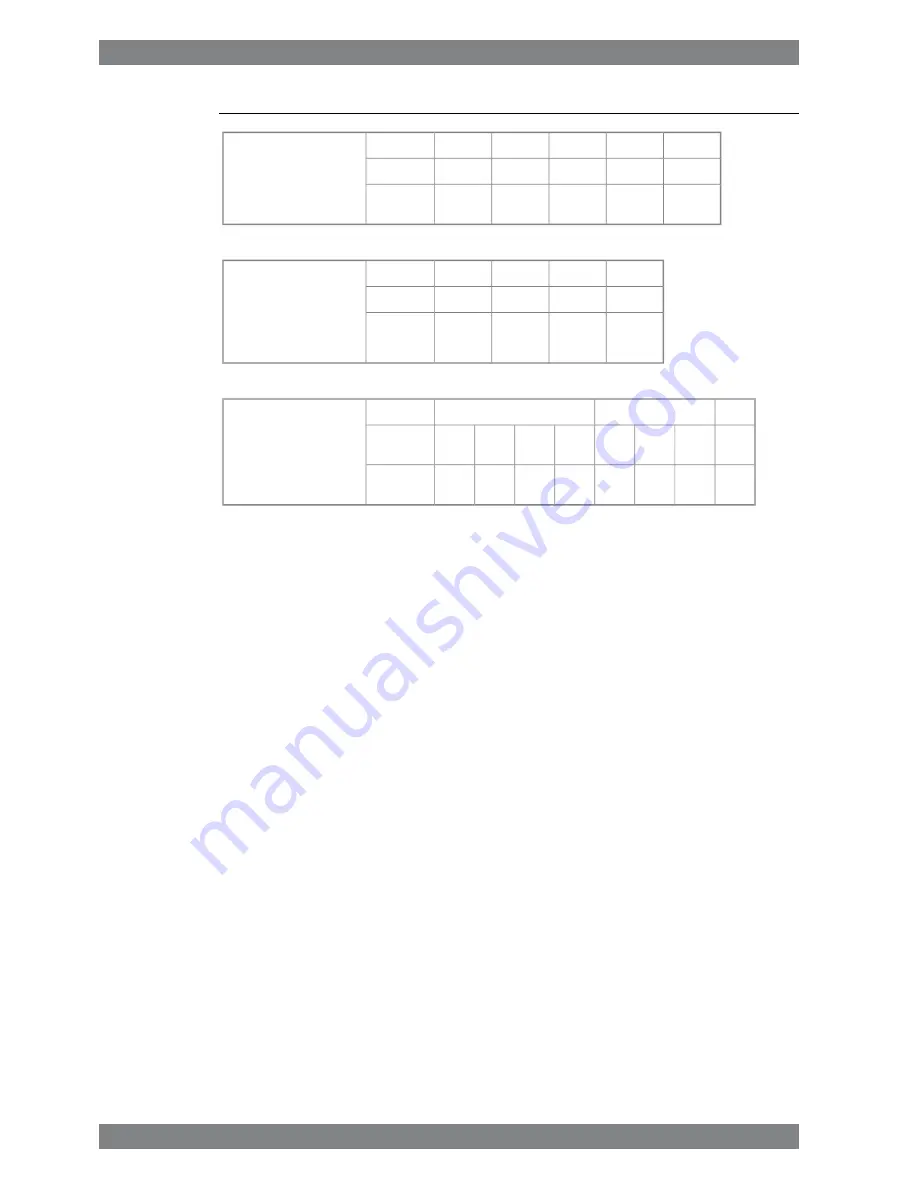
Table 13-1
ISO 8178 test cycles
100
100
100
100
100
Speed (%)
D2: Constant-speed
auxiliary engine applica-
tion
10
25
50
75
100
Power (%)
0.1
0.3
0.3
0.25
0.05
Weighting
factor
100
100
100
100
Speed (%)
E2: Constant-speed
main propulsion applica-
tion including diesel-
electric drive and all
controllable-pitch pro-
peller installations
25
50
75
100
Power (%)
0.15
0.15
0.5
0.2
Weighting
factor
Idle
Intermediate
Rated
Speed
C1: Variable -speed and
-load auxiliary engine
application
0
50
75
100
10
50
75
100
Torque
(%)
0.15
0.1
0.1
0.1
0.1
0.15
0.15
0.15
Weighting
factor
Engine family/group
As engine manufacturers have a variety of engines ranging in size and application, the NO
x
Technical Code allows the organising of engines into families or groups. By definition, an
engine family is a manufacturer’s grouping, which through their design, are expected to have
similar exhaust emissions characteristics i.e., their basic design parameters are common.
When testing an engine family, the engine which is expected to develop the worst emissions
is selected for testing. The engine family is represented by the parent engine, and the
certification emission testing is only necessary for the parent engine. Further engines can be
certified by checking document, component, setting etc., which have to show correspondence
with those of the parent engine.
Technical file
According to the IMO regulations, a Technical File shall be made for each engine. The Technical
File contains information about the components affecting NO
x
emissions, and each critical
component is marked with a special IMO number. The allowable setting values and parameters
for running the engine are also specified in the Technical File. The EIAPP certificate is part of
the IAPP (International Air Pollution Prevention) Certificate for the whole ship.
IMO NOx emission standards
The first IMO Tier 1 NOx emission standard entered into force in 2005 and applies to marine
diesel engines installed in ships constructed on or after 1.1.2000 and prior to 1.1.2011.
The Marpol Annex VI and the NO
x
Technical Code were later undertaken a review with the
intention to further reduce emissions from ships and a final adoption for IMO Tier 2 and Tier
3 standards were taken in October 2008.
The IMO Tier 2 NOx standard entered into force 1.1.2011 and replaced the IMO Tier 1 NOx
emission standard globally. The Tier 2 NOx standard applies for marine diesel engines installed
in ships constructed on or after 1.1.2011.
13-2
Wärtsilä 50DF Product Guide - a16 - 9 September 2016
Wärtsilä 50DF Product Guide
13. Exhaust Emissions
Summary of Contents for WARTSILA 50DF
Page 1: ...WÄRTSILÄ 50DF PRODUCT GUIDE ...
Page 14: ...This page intentionally left blank ...
Page 40: ...This page intentionally left blank ...
Page 58: ...This page intentionally left blank ...
Page 102: ...This page intentionally left blank ...
Page 120: ...This page intentionally left blank ...
Page 154: ...This page intentionally left blank ...
Page 164: ...This page intentionally left blank ...
Page 176: ...This page intentionally left blank ...
Page 214: ...This page intentionally left blank ...
Page 232: ...This page intentionally left blank ...
Page 234: ...This page intentionally left blank ...
Page 237: ......
Page 238: ......
Page 239: ......
















































